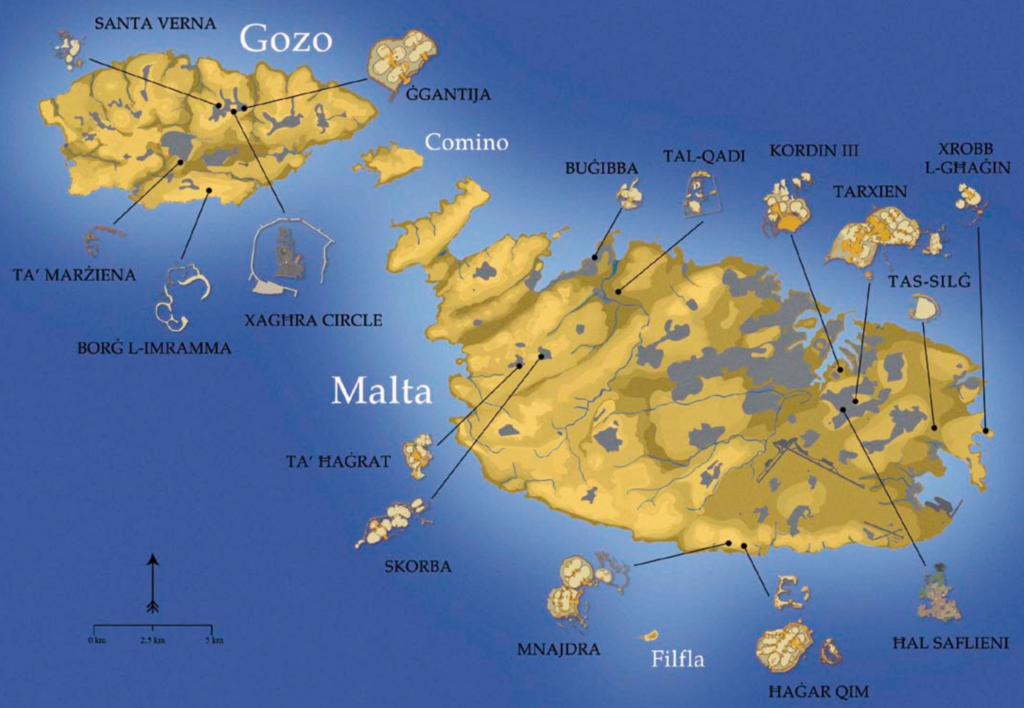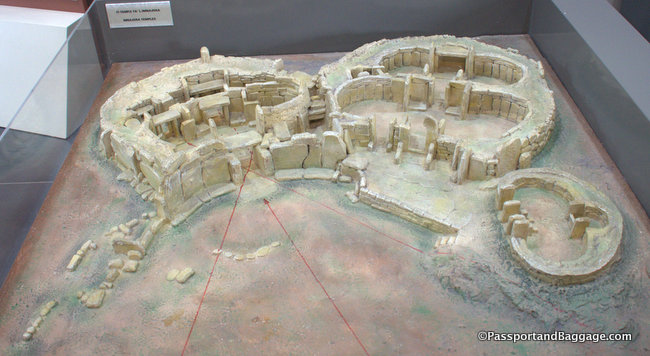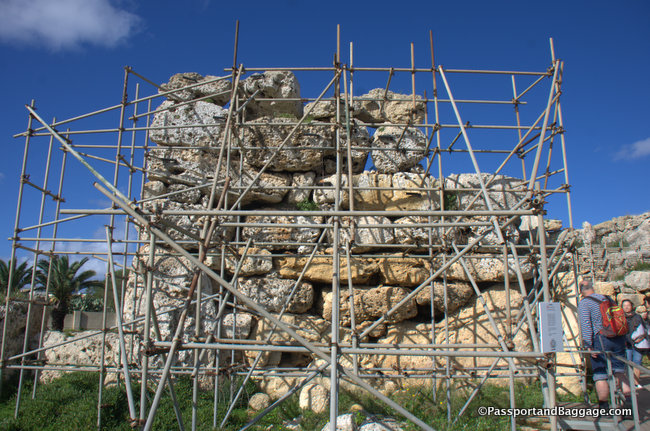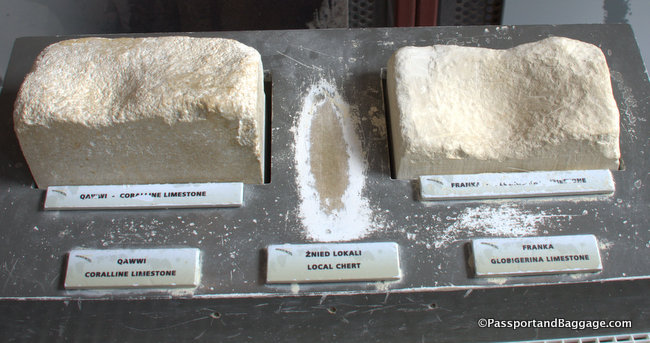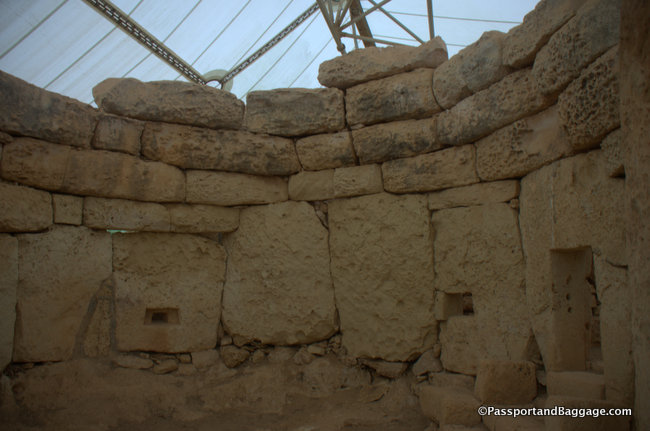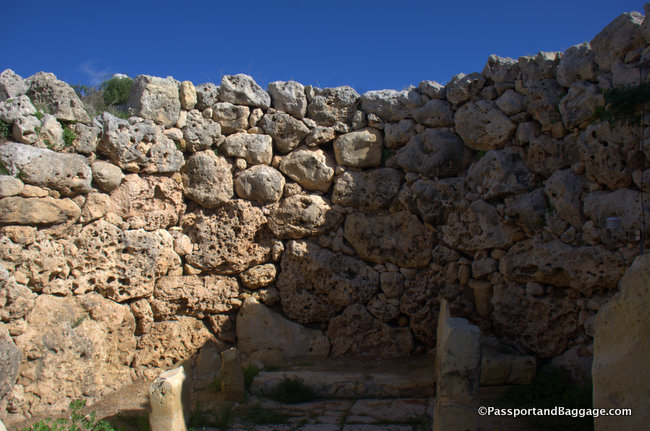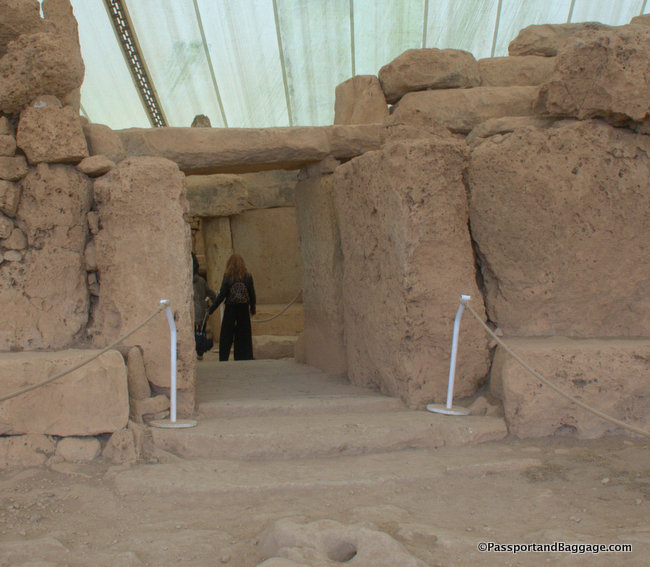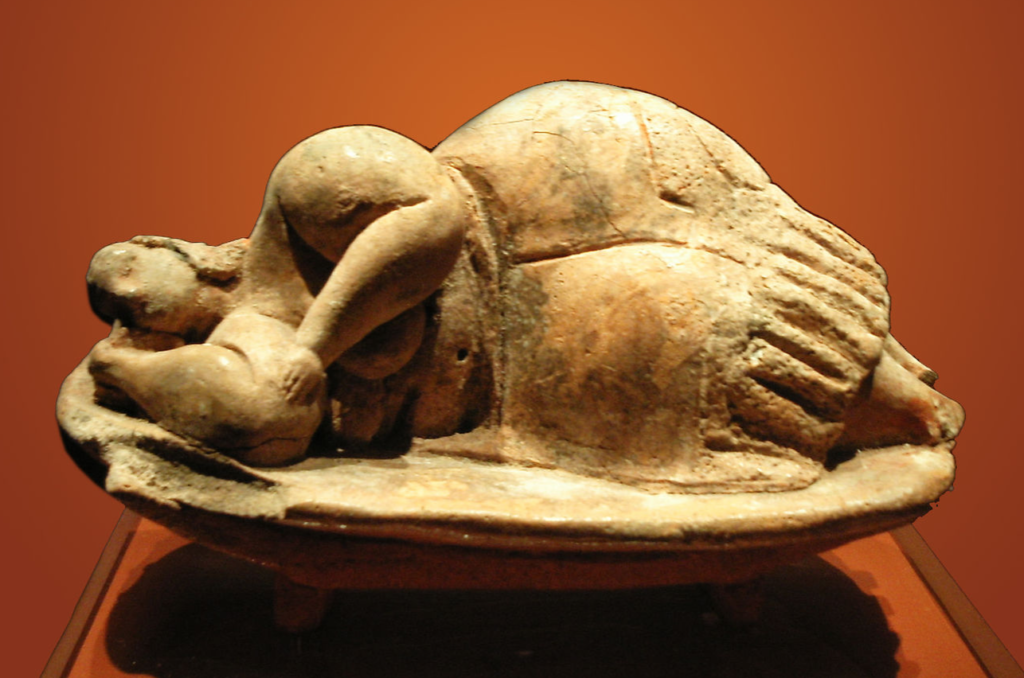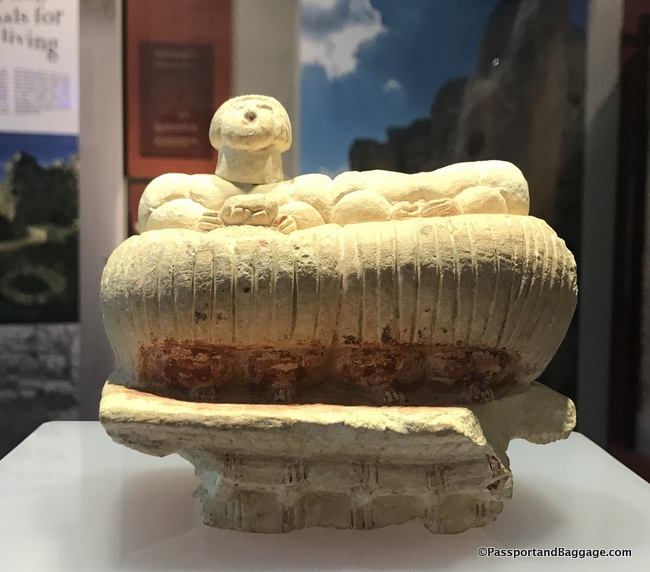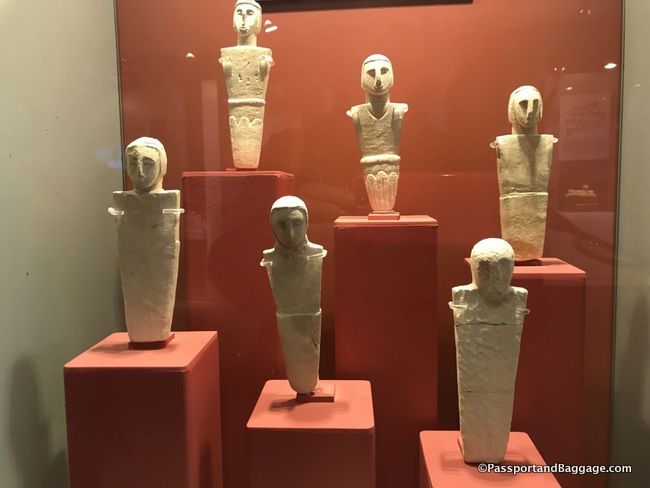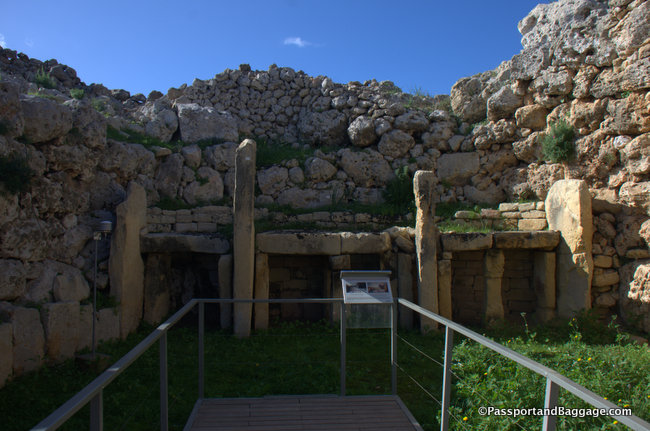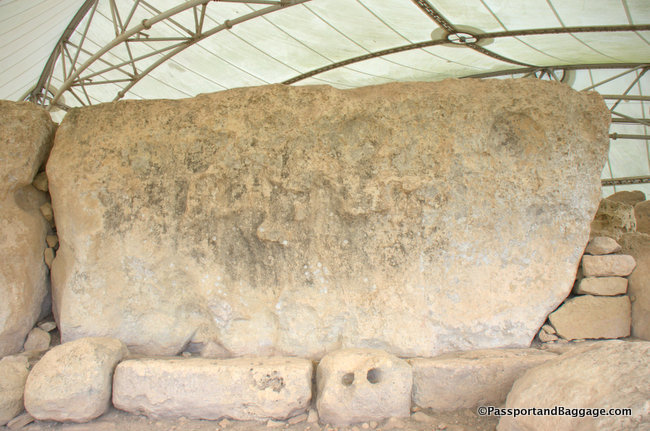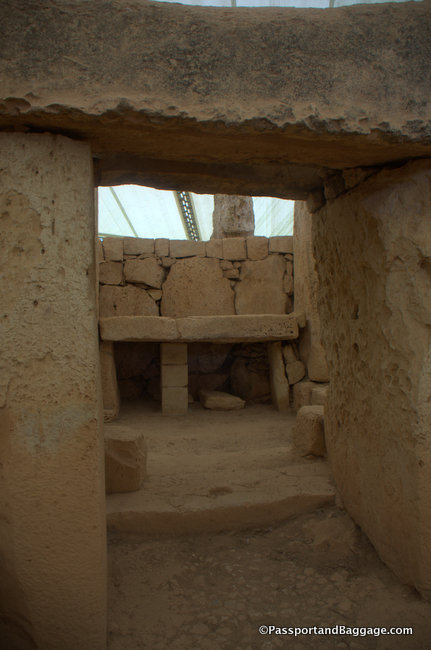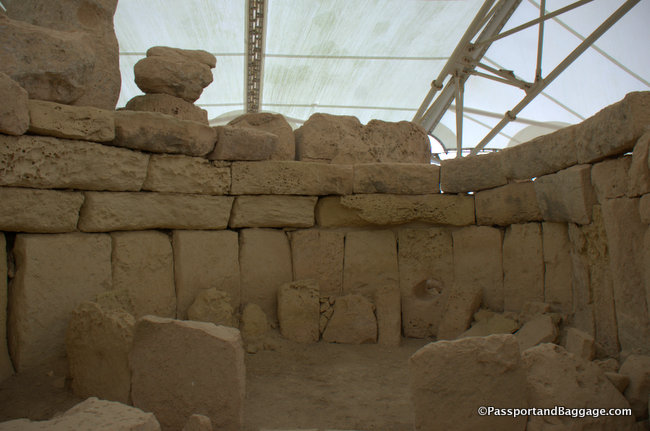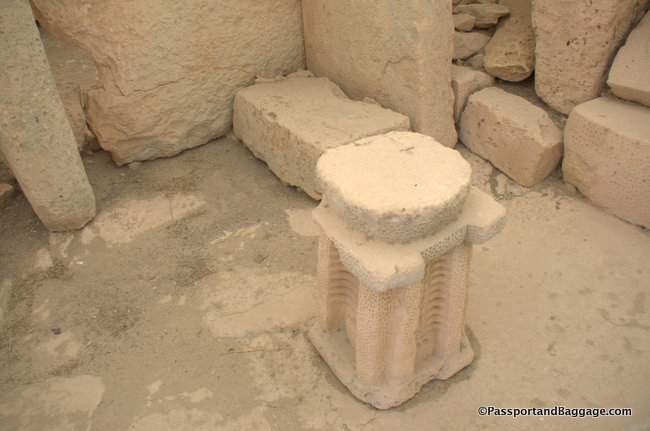November 2019
The historic timeline of Malta differed little from any other Neolithic society around the Mediterranean. That is, until 3500BCE. The sophisticated architecture of the structures from this period predates all other world cultures in the building of free-standing buildings in stone by almost 1000 years.
The megalithic temples of Malta have been dated back to the 4th Millenium BCE. The oldest of the major temple sites, Ggantija in Gozo, has been dated, on the basis of recalibrated radiocarbon dating, to 3600 to 3000 BCE, the “youngest”, Tarxien, to 3000 to 2500 BCE. This is, therefore, a civilization that lasted at least 1000 years. It is still not clear where it came from and where it disappeared to, and why.
The megalithic temples were made using large limestone blocks, hence the label “megalithic” or large stone. They typically have circular features that have been called “apses” and are found to have held various quality carved figurines, pottery, and small artifacts.
Archaeologists have, to date, discovered at least twenty megalithic temples on Malta and Gozo, many are not open to visitors. However, six of them are, and they make up the UNESCO World Heritage Site.
The best known are Mnajdra and Hagar Quim on the south-eastern coastline.
The Tarxien Temple was later used as a Bronze Age cemetery. Within walking distance of Tarxien is Hal Saflieni Hypogeum, a subterranean rock-hewn cemetery complex discovered in the early 20th century where no photos are allowed, only 10 people may enter at one time and reservations need to be made at least one month in advance. Although considered separate from the megalithic temples it was classified as a UNESCO World Heritage site in its own right in 1980.
In the north of the island are Ta Hagrat and the Skorba temples.
On Gozo, the Ggantija temples are two temples that stand side by side encircled by one megalithic wall. Due to the size of the boulders, much of this site is covered in metal girders and scaffolding to hold the parts of the temple in place, making the experience not as pleasurable as the others.
There are two types of limestone found in Malta and used in the megalithic structures. The Coraline Limestone on the left is considerably harder and therefore less subject to weather and usage. The Globigerina limestone is very soft, great for sculpting, but does not hold up well to the elements.
The carefully-dressed stones and the building plans can not be matched in any other monuments. The typical temple consists of a number of unique elements. They are approached across an oval space, leveled up by terracing if the ground slopes, and possibly bounded on the outer edge by a set of stones. This forecourt is overlooked by a temple facade that faces the south or southeast and composed of a row of large stone slabs on end. Where the cornerstones have survived they are taller than either end of the facade. Above the first row of stones, the wall is continued upwards in small blocks. The center of the facade is punctuated by the entrance doorway. The next element is a pair of D-shaped or ovoid chambers once you enter
Many of the sites have decorated stones. Some walls were plastered and then ochred, a substance that is not native, and most likely came from Sicily, Checkerboard patterns and spirals on the altar blocks were the overriding ornamentations.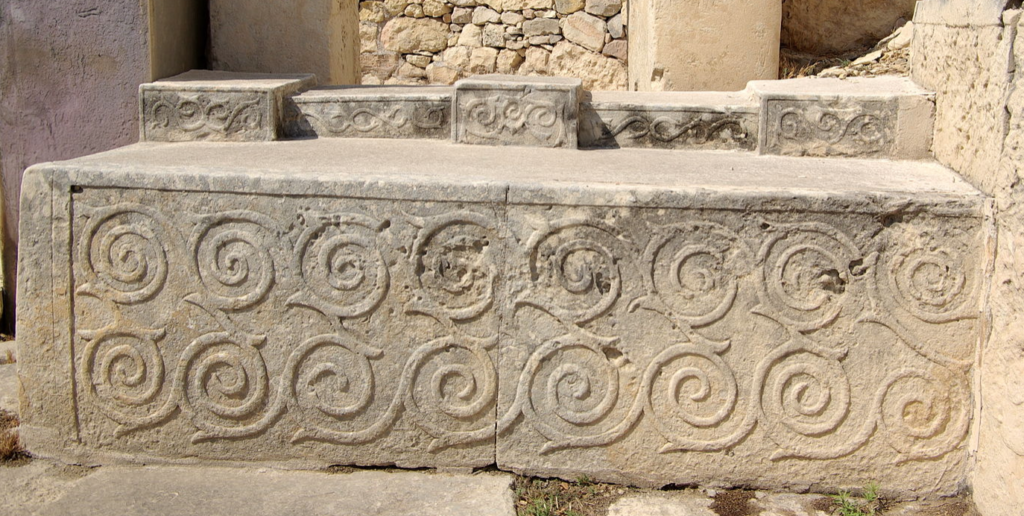
In Taxia you will find a carved spiral pattern on the side alter.
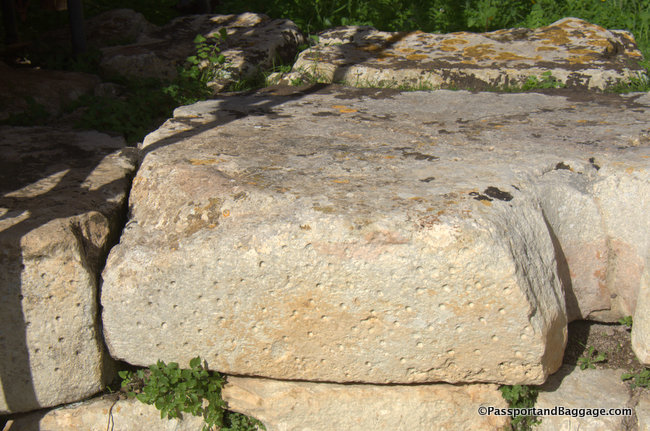 There is also work that has been called pitting, which looks like a bird pecked its way across the entire surface.
There is also work that has been called pitting, which looks like a bird pecked its way across the entire surface.
Stone sculptures were also found inside several of the sites.
The most impressive consist of the Sleeping Lady found in Hal Sflieni, a naturalistic human form modeled in clay and then baked to a hard ceramic. The other is one half of a giant sculpture in Tarxien. The top half of this skirted figure was lost due to farming above the site, long before it was understood what was there.
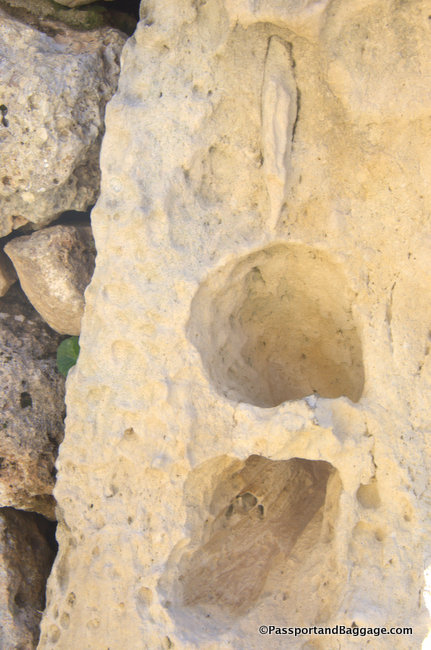
Holes for what appears to be, tying up sacrificial animals, can be found throughout all of the sites
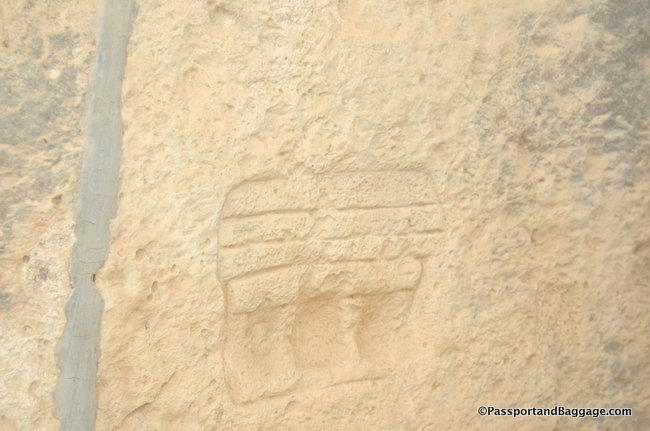
A representation of a temple facade engraved into a major upright on the left of the Central temple of Minajdra.
*
Tools used would have been hand-axes of flint and quartzite, (obtained from volcanic islands in the vicinity), knives and scrapers of obsidian, wedges of wood or stone, pickaxes made of branched horns of antlers or of flint, stone hammers, wooden rammers, wooden levers, and wooden or stone rollers.
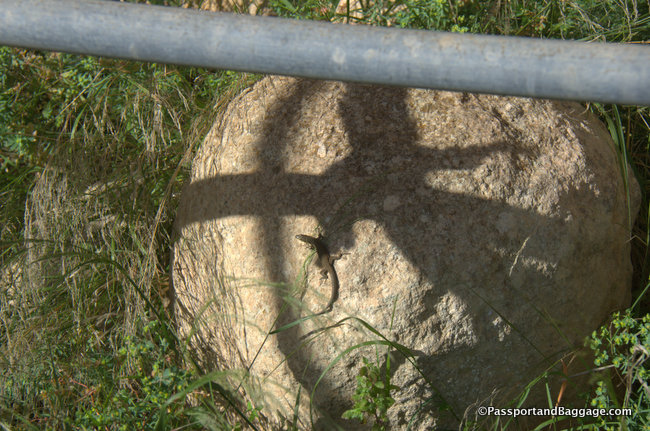 *
*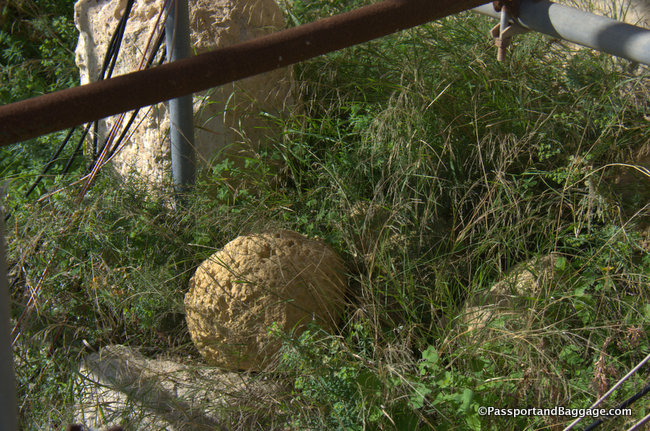 The discovery of large stone balls could have been a feature of the process of lifting upright the enormous megaliths, or in the transport of these same megaliths.
The discovery of large stone balls could have been a feature of the process of lifting upright the enormous megaliths, or in the transport of these same megaliths.
An excellent book for delving deeply into the construction and to understand each individual site is Malta Prehistory and Temples by David H. Trump.
